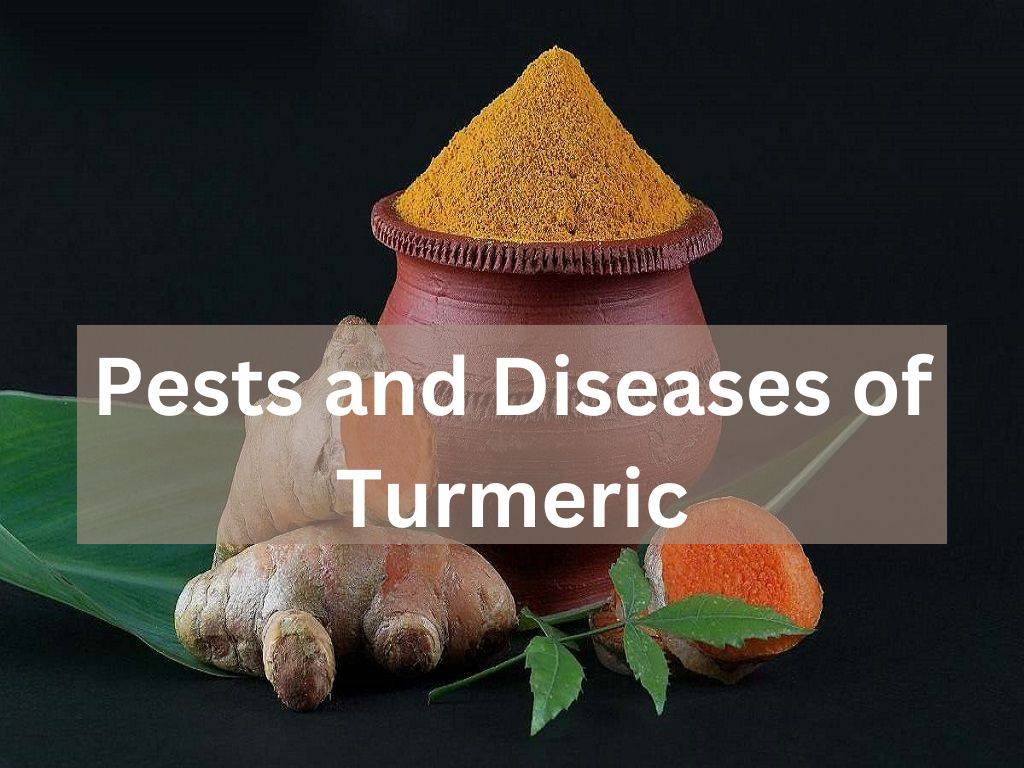
Beyond its usage in religious rituals, turmeric (Curcuma longa; Zingiberaceae family) is used as a spice, colour, medicine, and cosmetic. India is the world's top producer and exporter of turmeric and is grown in many states, including Andhra Pradesh, Tamil Nadu, Orissa, Karnataka, West Bengal, Gujarat, Meghalaya, Maharashtra, and Assam.
The fundamental method for controlling pests and diseases in farming relies on a variety of preventative and other management techniques to reduce the occurrence of pests and illnesses. Decisions on the need to act for regulating the pest population may be made with the help of regular field surveillance, the implementation of phytosanitary measures, and an awareness of both the life cycles of the pest and its predators.
Let us discuss some common diseases, insects and pests of Turmeric and how to manage them.
Pests and Diseases of Turmeric:
1. Shoot Borer (Conogethes punctiferalis)
In the field, the pest population is more prevalent from September through October. Between July and October, the pest is mostly active. The infected shoots are yellow and dry as larvae penetrate into the pseudo stems and feed on the developing shoot.
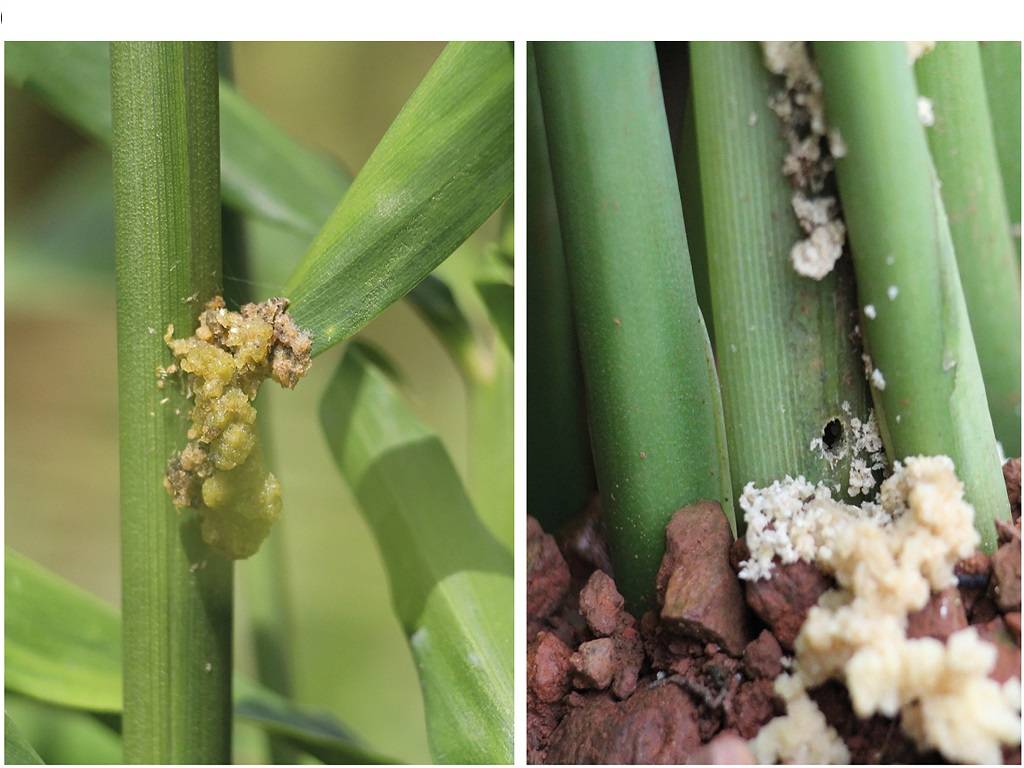
A defining sign of pest infestation is the existence of a bore hole on the pseudo stem through which frass is ejected and the withered and yellow core shoot.
Management:
From July through October, use Malathion 0.1% or Dimethoate at monthly intervals.
2. Rhizome Scale (Aspidiotus hartii)
Both Nymphs and adults infect both in the field as well as in storage conditions. When the rhizomes are badly infected, adult (female) scales feed on sap and cause them to shrivel and desiccate, which affects germination. The white-colored scales are first noticed on rhizomes dispersed, and subsequently, they gather close to the developing buds. When the infestation is severe, the rhizome's buds and main stem eventually dry off.
Management:
-
Apply two splits of well-rotted sheep manure or poultry manure at a rate of 10 tons per hectare: the first before planting and the second while earthing up.
-
Dimethoate 30 EC or phosalone 35 EC at 2 ml/L of water should be applied to the soil.
-
To prepare seed rhizomes for storage, soak them for 15 minutes in insecticide solutions of dimethoate 30 EC, phosalone 1.5 ml/L, monocrotophos 36 WSC 1.5 ml/L, or dichlorvos 0.5 ml/L.
3. Thrips (Panchaetothrips indicus)
This is mainly prevalent in South India. Nymphs and adults suffer laceration, which causes the leaves to curl up, turn pale, and eventually dry out. Adult wings have fringes. By sucking the plant sap from the undersides of leaves, thrips cause harm to tender, immature plant components including new leaves and branches. Young leaves that are severely infested wilt and dry out.
Management:
Spray 500–750 ml of dimethoate 30 EC in 500–750 l of water per hectare to suppress thrips.
4. Nematodes (Meloidogyne sp., Radopholus similis)
Stunting, chlorosis, poor tillering, and necrosis of leaves are the frequent aerial symptoms caused by the root-knot nematode, which feeds on delicate rhizomes, roots, and the base of pseudo stems. Roots frequently exhibit distinctive root galls and lesions that cause rotting. The exterior tissues of the infected rhizomes show brown, water-soaked patches.
Rhizome rot disease is aggravated by nematode infection.
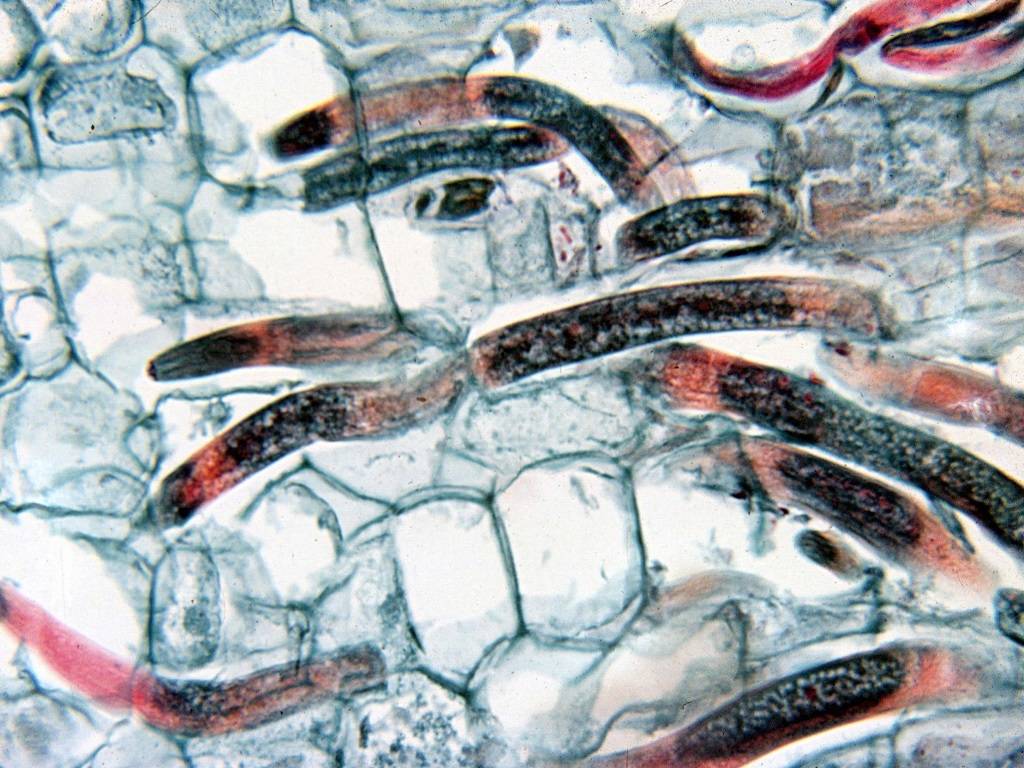
Management:
- Apply 1 kilogram of aldicarb per hectare of soil.
- Use of nematode-free planting material.
5. Rhizome Rot
The most devastating disease of turmeric reported is rhizome rot from Andhra Pradesh and Tamil Nadu caused by Pythium aphanidermatum.
Symptoms:
-
The leaves of the infected plants turn yellow from the lower leaves and eventually progress to the top parts of the plant.
-
The fading leaves' edges turn necrotic and begin to dry from the outside in, which causes partial or total blighting of the leaves.
-
At the base of the pseudo stems, water-soaked dark brown lesions start to form and quickly grow before drying up.
-
The diseased tillers fall off, and the infected pseudo stems rip free.
-
The impacted plants exhibit decay in varied degrees.
-
The virus causes soft rot by moving from the rhizome to the roots (affected rhizome becoming soft to the touch).
-
The transmission of infection is also seen from the tips of rhizomes.
-
In advanced stages, infected rhizomes emit a foul smell.
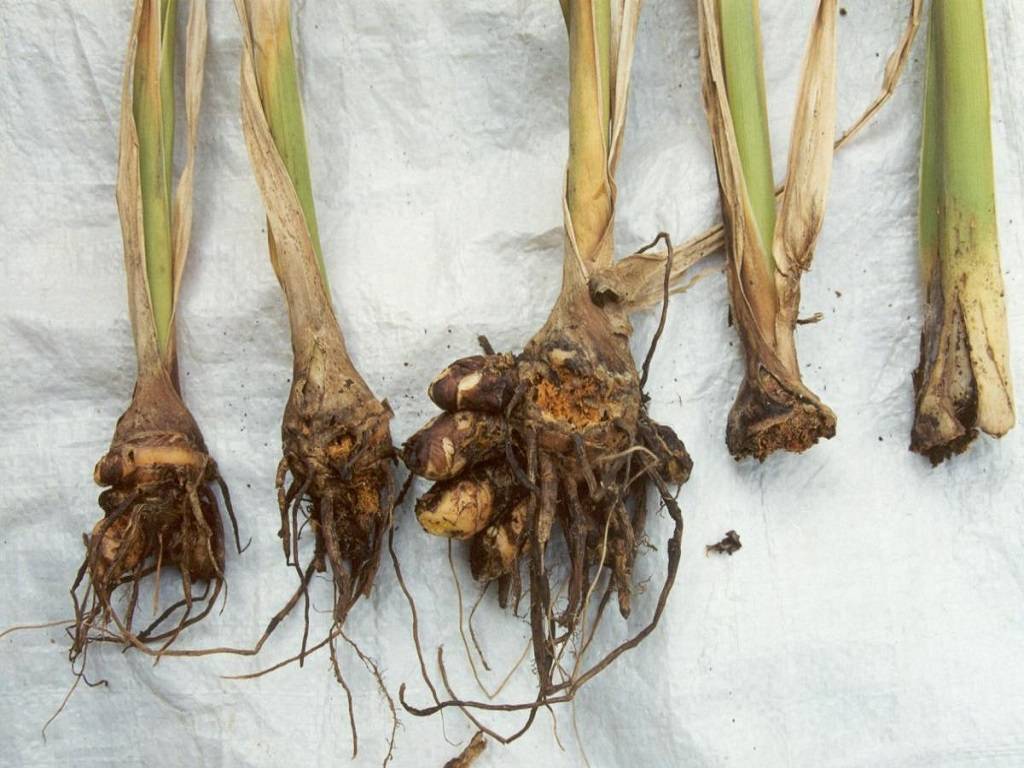
Management:
-
Choosing healthy seeds from gardens free of illness.
-
Rotation of crops utilizing non-host crops in endemic regions
-
The contaminated clumps should be removed from the field and burned.
-
The application of urea (5 kg/ha) to the infected soil had an impact on the fungus' ability to survive. Urea indeed has a depressant impact on microbial development.
-
The PCT 13 and PCT 14 turmeric types were resistant cultivars.
-
Along with reducing rhizome rot disease, soil drenching (0.1 g/lit) and seed dipping in metalaxyl 8 + mancozeb 72 (Ridomil MZ) for 40 minutes each also boosted rhizome production.
-
After observing the disease's earliest signs in the field drench soil.
6. Leaf Spot
Leaf spot caused by Colletotrichum capsica is more devastating and widespread in Tamil Nadu especially Coimbatore, Vellore, Thiruvannamalai, Salem and Trichy districts where the majority of the state's turmeric is grown. This was originally recorded in 1917 in Coimbatore.

Symptoms:
-
Typically, infection is limited to leaf blades, however, it can occasionally spread to the leaf sheath as well.
-
The majority of the leaves are covered in elliptic to oblong leaf spots that range in size from 0.5 to 4.5 cm in length and 3 cm in width.
-
The mature spot has a greyish white center with a brown perimeter and a yellowish halo around it, which is where the poison is produced.
-
It has been discovered that the endotoxin generated definitely influences how symptoms manifest.
-
The white center with dark acervuli is frequently papery and ripped off.
-
On leaf sheaths, dots can occasionally be seen.
-
Rhizomes are also impacted, and a black stroma develops on the scales that cover them.
Management:
-
Sugantham is said to be quite resistant.
-
The application of potash lowered the disease's occurrence. When potash was given at higher doses of 70 and 120 kg/ha, the illness incidence decreased to 21.8 and 18.6%, respectively, from 46.3% in the control.
-
If the rhizomes are planted in May or June, the incidence is lower.
-
The disease was controlled by spraying the crop with a Bordeaux combination (5 kg/ha) in August and Mancozeb (1 kg/ha) at monthly intervals from September to December.
7. Leaf Blotch
The Gangetic Plains in Uttar Pradesh and Bihar as well as the Southern States have a high prevalence of the disease. In 1911, Rangpur (East Pakistan), Saharanpur (UP), and Gujarat all reported cases of this disease. Leaf Blotch is caused by Taphrina maculans.
Symptoms:
-
When the plants are in the third or fourth leaf stage, the disease first appears as tiny, dispersed, transparent greasy spots on the lower leaves.
-
The leaf patches eventually become dirty yellow, deepen to gold, and occasionally take on a hay-like hue.
-
A reddish-brown blotch is formed when nearby individual leaf spots that are 1-2 mm in diameter combine, causing different degrees of leaf blight.
-
The functional laminal surface is significantly decreased as a result of severe chloroplast breakdown and spots, which has a negative indirect impact on plant productivity.
Management:
-
It is important to perform field sanitation.
-
Crop rotation becomes crucial to preventing the accumulation of inoculum.
-
The antifungal drug aureofungin, 2.5 g/ml, significantly inhibited the development of maculans.
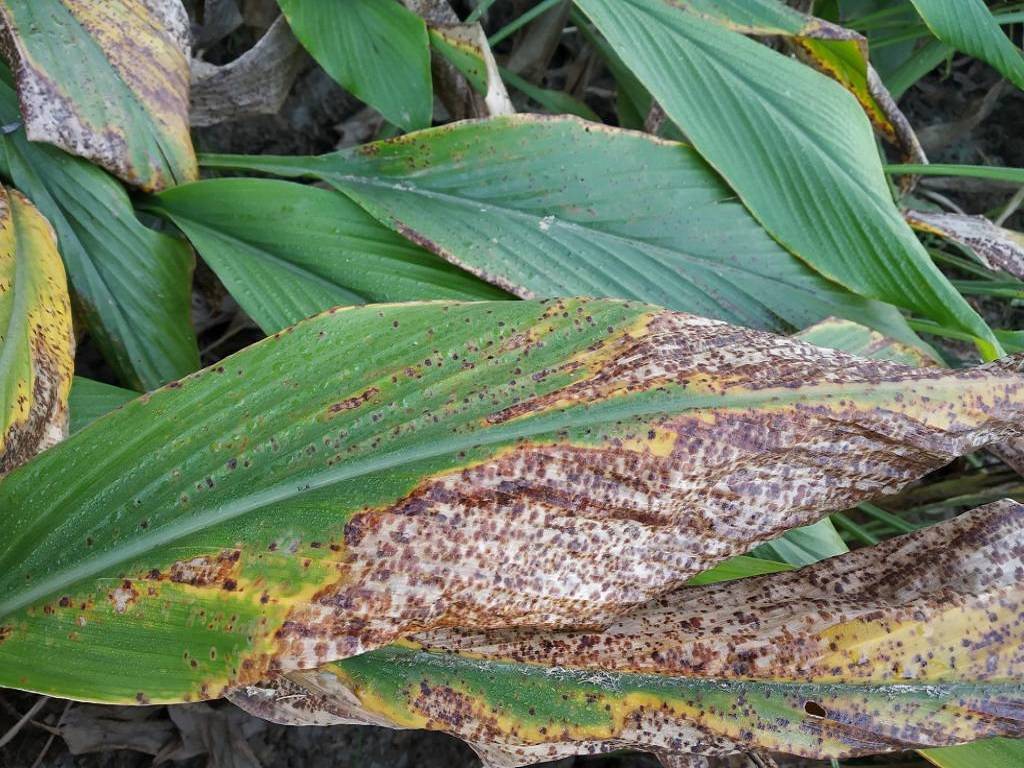
Conclusion:
Several interconnected tasks make up pest and disease control. The majority of management techniques are long-term actions designed to shield turmeric crops against pests and diseases. The goal of management is to keep disease and insect populations under control. Management, therefore, has a considerably higher value than control.
















